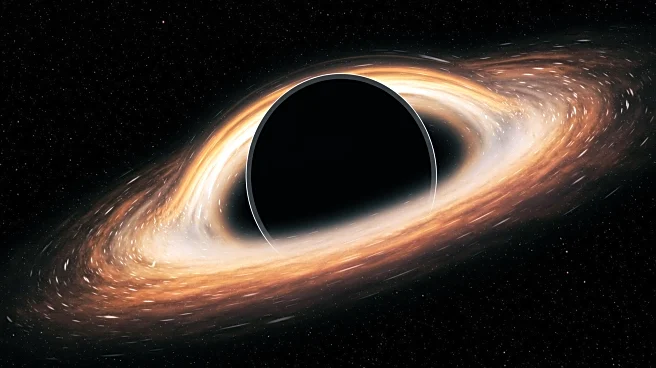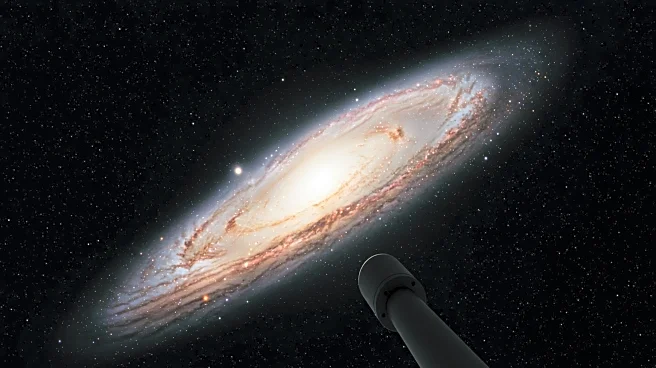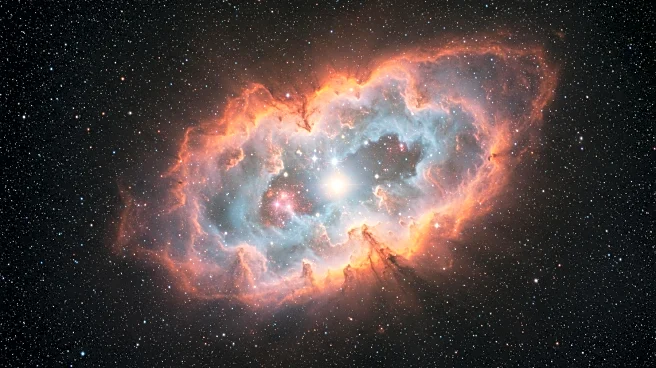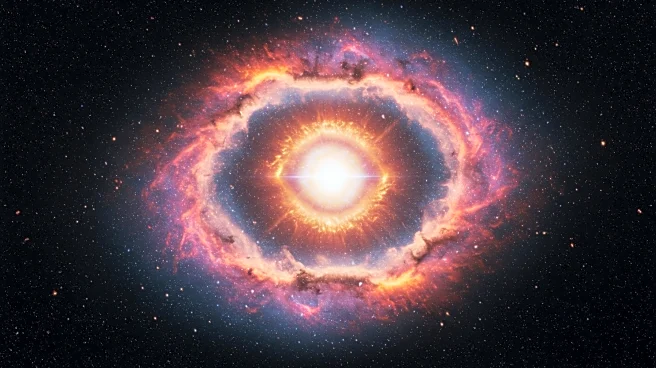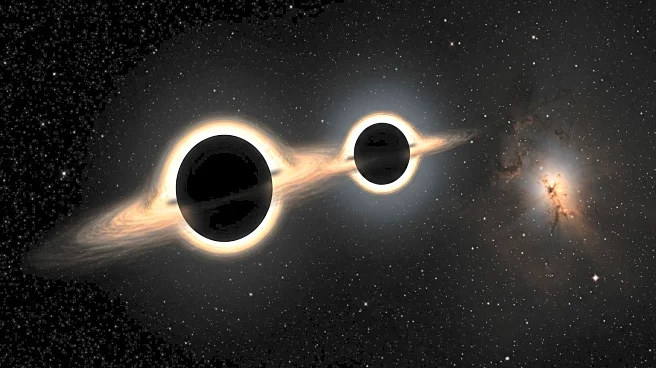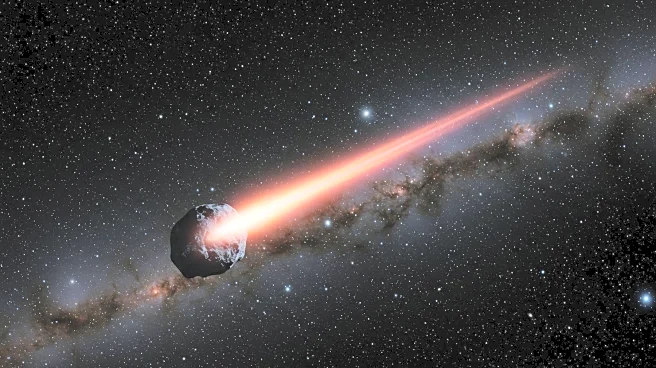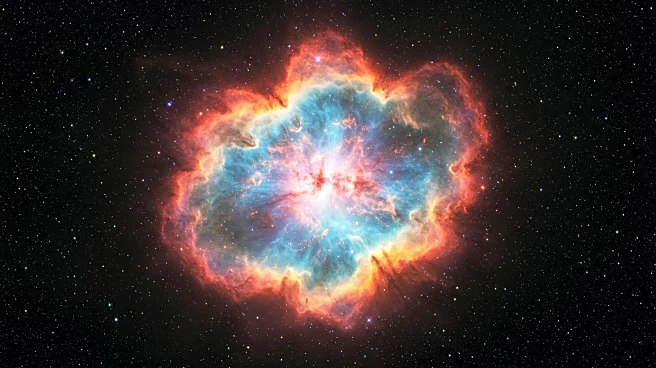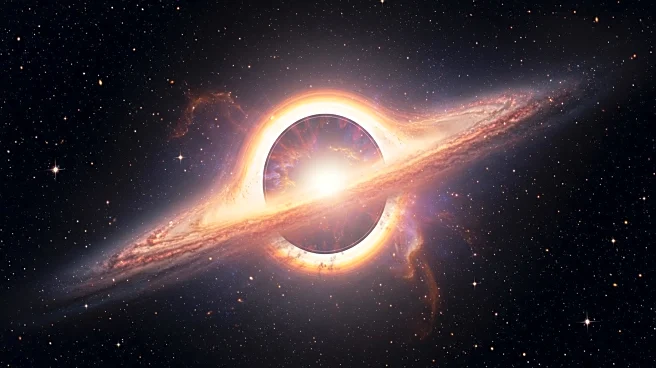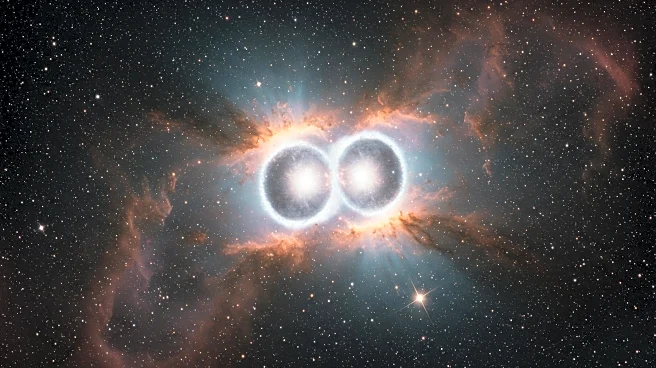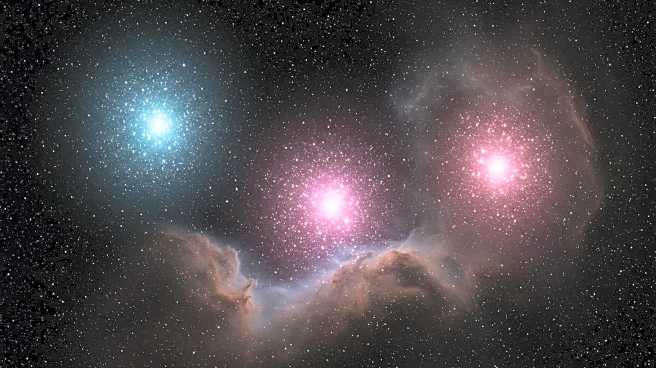What's Happening?
An international team of astronomers, led by Matus Rybak from Leiden University, has discovered millimeter radiation generated close to the core of a supermassive black hole. This discovery was made possible through an accidental double zoom effect, combining microlensing and macrolensing, which magnified the galaxy RXJ1131-1231. The team used the ALMA telescope to detect changes in brightness of the galaxy's images, indicating microlensing. The radiation is believed to originate from the corona, a hot, magnetic band around the black hole. This finding marks the first time millimeter radiation has been observed in such a context, providing new insights into the conditions near supermassive black holes.
Why It's Important?
The discovery of millimeter radiation near a supermassive black hole is significant for understanding the dynamics and conditions in these extreme environments. It offers insights into the temperature and magnetic fields close to black holes, which can influence the surrounding galaxy. This research could lead to advancements in astrophysics, particularly in the study of black hole coronas and their impact on galaxy formation and evolution. The findings also demonstrate the potential of microlensing as a tool for observing phenomena that are otherwise invisible, paving the way for future studies in this area.
What's Next?
The research team has been allocated observation time with the Chandra X-ray Telescope to further study the quasar and its surrounding environment. They aim to use microlensing to explore the temperature and magnetic fields near the black hole, which could provide deeper insights into the mechanisms at play. Continued observations and analysis will help refine our understanding of black hole coronas and their role in the universe.
